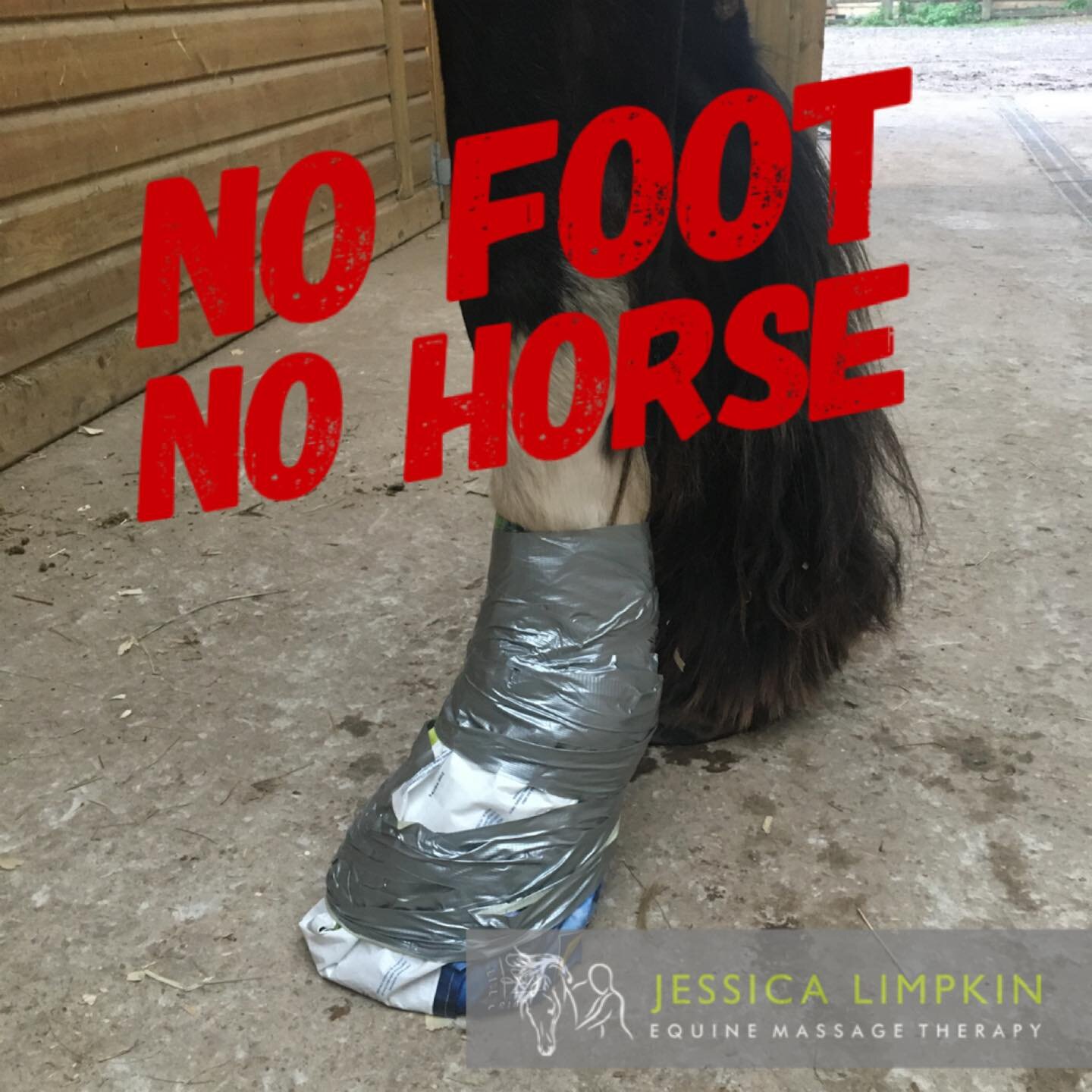No Foot, No Horse - Hoof Abscesses - The Facts
We have all heard the saying 'No foot, No horse'
And it couldn't be more true ‼️
The image is of my own horse who had an abscess in his foot recently 🤕
I don't think Lidl designed their Bags For Life for this purpose but they do come in useful 🤣
❓Did you know your horse spends upwards of 21 hours a day on their feet ❓
Some horses spend even more time than this if they don't feel comfortable laying down.
There are 2 main reasons Your horse may not lay down to sleep:
▪️ If they do not feel safe in their environment
▪️They have pain and are in fear of not being able to get back up
Imagine how your feet would feel if you were on them all day, particularly if they were compromised by an illness, injury or pathology 😭
There are many ways in which the Equine hoof can be compromised, too many to cover in one short blog post 🤯
Today I just wanted to scratch the surface of the hoof abscess and how this might relate to Equine Massage Therapy.
❓What is a hoof abscess?
🔹A hoof abscess occurs when bacteria gets trapped between the sensitive laminae tissue in the foot and the hoof wall or sole.
🔹The bacteria create pus which builds up and creates pressure behind the hoof wall or sole.
❓Why do horses get hoof abscesses?
🔹When the conditions are wet the feet can soften making it easier for bacteria to get trapped inside
🔹When the conditions are extremely dry the feet can become brittle or cracked making it easier for bacteria to enter the foot through hoof cracks, by traveling up the white line
🔹If the foot is wounded the bacteria can penetrate through the wound and into the foot
🔹Deep bruising of the foot may also trigger abscesses
❓How do I know if my horse has a hoof abscess?
🔹The pressure created by a hoof abscess can become extremely painful for the horse
🔹Your horse will appear lame
🔹Your horse may appear to have developed the lameness 'overnight'
🔹Changes in blood flow to the hoof cause it to throb, you may be able to feel this as a raised pulse in the affected lower limb
🔹Your horse will often react on palpation of the coronary band (hairline) or heel bulbs
❓How can it be treated?
🔹If you suspect your horse has a hoof abscess you should contact your vet or farrier immediately
🔹Your vet or farrier can diagnose a hoof abscess based on history and a physical examination
🔹They will usually use hoof testers to localize the abscess to a region of the foot
🔹They may then be able to locate and release the abscess making your horse instantly more comfortable
🔹Your vet or farrier will then be able to advise you on further treatment required such as wet or dry poulticing (like the horse in the post image)
🔹Depending on the severity of the abscess your vet may need to prescribe pain relief and/or anti biotics
❓How can Equine Massage Therapy help?
🔹Once your vet or farrier has diagnosed and treated the hoof abscess and your horse is sound again and free from any infection you may want to think about some treatment for the musculoskeletal system
🔹Any discomfort or lameness you're horse experiences in their feet will radiate through the soft tissue causing tension, restrictions and possible compensatory movement patterns
🔹Detecting and addressing these restrictions early on will aid in preventing any more serious problems occurring that may affect your horse's comfort and therefore performance
🔹Horses being treated for foot abscesses may spend more time than usual standing around, this can lead to a build up of toxins and a decrease in circulation around the body
🔹Equine Massage Therapy helps increase circulation, encouraging the body to heal and also assists in draining the lymphatic system, removing unwanted toxins from the body
▪️If you think Equine Massage Therapy could help your horse please do get in touch for find ou

